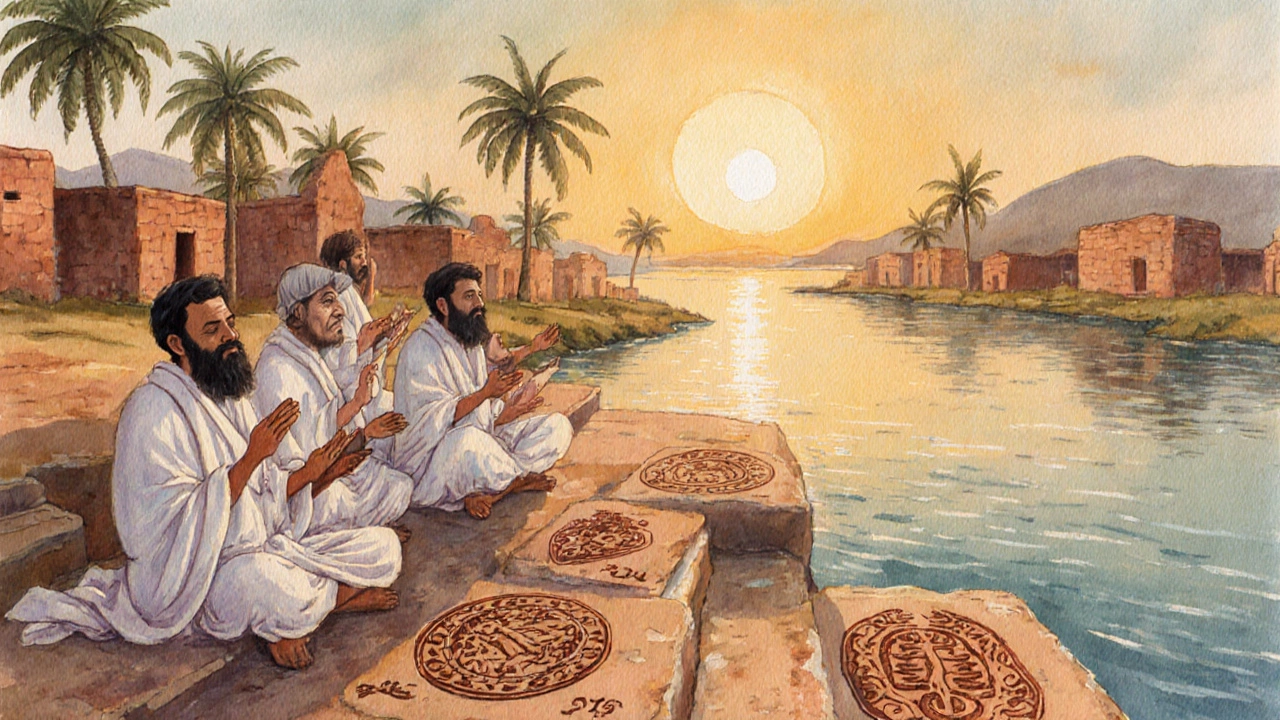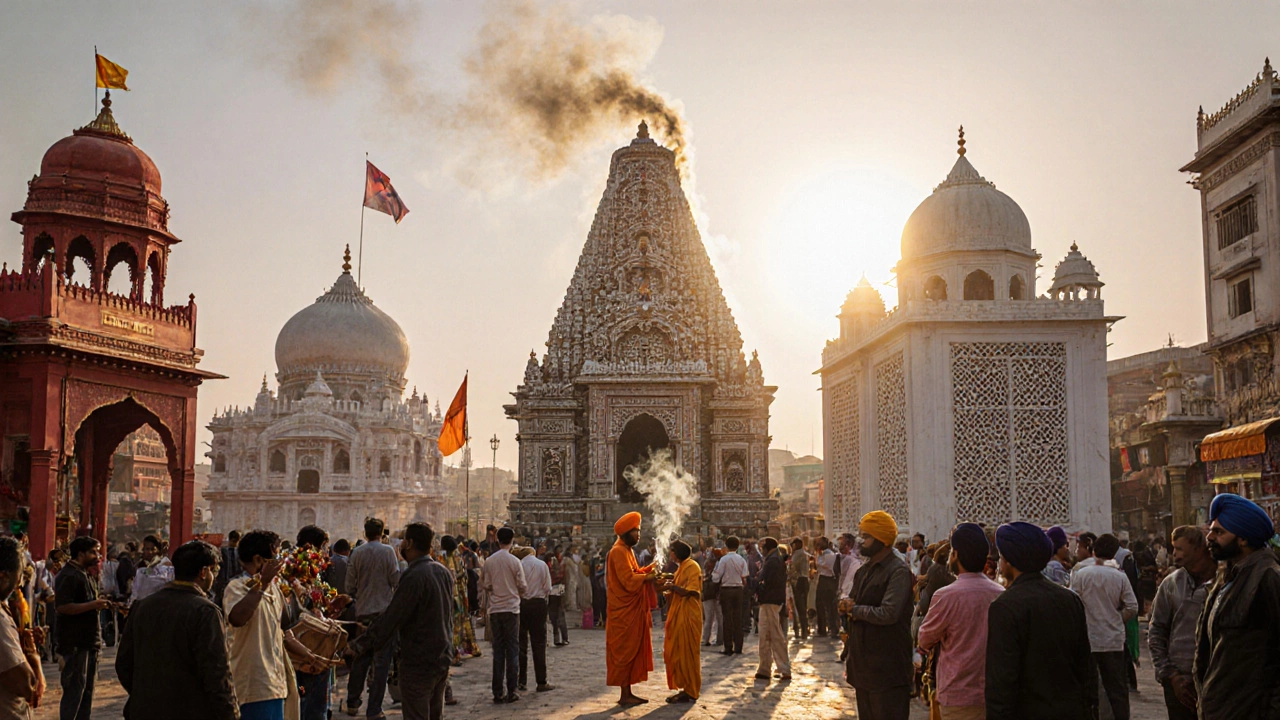Why India Is Called the Most Spiritual Country - Facts & Insights
 Oct, 19 2025
Oct, 19 2025
When you hear the phrase most spiritual country, the image that usually pops up is a land where ancient chants echo in bustling streets and every corner holds a story about the soul. That’s exactly what India is a South Asian nation known for its deep‑rooted spiritual heritage, diverse religious fabric, and practices that have traveled the world offers. In this article we’ll explore why India earns that title, looking at history, religions, texts, daily habits, and modern trends.
Historical Roots of Indian Spirituality
The story starts over 5,000 years ago with the Indus Valley civilization, where archaeologists uncovered seals that hint at early ritual practices. By the time the Vedic period blossomed (around 1500‑500 BCE), the foundations of what we now call Hinduism emerged as a collection of rituals, hymns, and philosophical ideas recorded in the Vedas were already taking shape. These hymns, such as the Rig Veda, are among the oldest religious texts still in use.
Following the Vedic era, new philosophies sprouted: the Upanishads (circa 800‑200 BCE) shifted focus from external rituals to inner realization. This inner‑light quest sparked the later rise of Buddhism founded by Siddhartha Gautama in the 5th century BCE, emphasizing the path to enlightenment through meditation and ethical living, and Jainism established by Mahavira around the same time, advocating non‑violence and self‑discipline as routes to liberation. These movements co‑existed, creating a vibrant spiritual marketplace.
Diverse Religious Landscape
India’s spiritual tapestry isn’t limited to Hinduism, Buddhism, and Jainism. Sikhism originated in the Punjab region in the 15th century, blending devotion to one God with a strong emphasis on equality and service adds another layer. Even Islam and Christianity, introduced through trade and colonial contact, adopted distinctly Indian expressions, such as Sufi shrines that merge Islamic mysticism with local music and dance.
This pluralism isn’t just tolerated-it’s institutionalized. The Indian Constitution guarantees freedom of religion, allowing each tradition to flourish side‑by‑side. That legal and cultural openness is a key reason why spirituality remains a daily reality for millions.
Philosophical Texts that Shaped Thought
Beyond the Vedas, a handful of ancient works continue to guide seekers worldwide:
- Upanishads offer profound dialogues on the nature of reality, the self (Atman), and the universal spirit (Brahman)
- Bhagavad Gita presented as a conversation between Prince Arjuna and Lord Krishna, it outlines duty, devotion, and the paths of knowledge, action, and love
- Dhammapada a collection of Buddha’s sayings that distills the core of Buddhist ethics and meditation
- Yoga Sutras written by Patanjali, they codify the eight‑limb path toward mental clarity and spiritual union
These texts aren’t just scholarly artifacts; they are living guides recited in temples, classrooms, and even corporate wellness programs.

Practices that Spread Beyond Borders
Some Indian practices have become global phenomena. Yoga combines postures (asanas), breath control (pranayama), and meditation, offering a holistic approach to health and inner peace is now taught in gyms from New York to Nairobi. Meditation in its various forms-mindfulness, Transcendental, Vipassana-originated in Indian traditions and is embraced by tech workers and schools alike.
Another export is the concept of an Ashram a retreat where seekers live simply, study scriptures, and practice yoga together. From the Beatles’ stay at Maharishi’s ashram to modern wellness resorts, these spaces illustrate how India’s spiritual lifestyle adapts to contemporary needs.
Cultural Values that Keep Spirituality Alive
India’s festivals are perhaps the most visible proof of a spiritually driven culture. Diwali (the Festival of Lights), Holi (the Festival of Colors), Buddha Purnima, and Guru Purnima all blend ritual, communal bonding, and philosophical storytelling. Even daily routines-praying before meals, lighting incense, reciting mantras-stem from a worldview where the mundane and the sacred intersect.
Family structures also reinforce spiritual habits. Many homes have a dedicated altar (puja room) where elders teach children chants and moral lessons. This intergenerational transmission means spiritual concepts aren’t confined to textbooks; they’re lived experiences.
Why India Stands Out Today
Fast‑forward to 2025, and India remains a spiritual powerhouse for three main reasons:
- Scale and Diversity: Over 1.4 billion people practice a range of faiths, making spiritual discourse a national conversation.
- Global Influence: Indian teachers, yoga studios, and meditation apps dominate the wellness market, spreading Indian ideas far beyond its borders.
- Modern Integration: Tech startups integrate AI with Vedic astrology, universities offer courses on comparative spirituality, and government policies support heritage sites like the Bodh Gaya pilgrimage.
These factors create a feedback loop-more visibility draws curiosity, which fuels new practitioners, which in turn amplifies India’s spiritual brand.

Quick Checklist for Exploring Indian Spirituality
- Read a core text: try the Bhagavad Gita or the Upanishads.
- Try a short yoga session (15 minutes) focusing on breath.
- Visit a local Indian temple or community center for a puja experience.
- Listen to a guided meditation rooted in Vipassana or mantra chanting.
- Attend a cultural festival (online or in‑person) to see rituals in action.
Following this list gives you a taste of why so many label India as the most spiritual nation on Earth.
Comparison of Major Spiritual Traditions in India
| Tradition | Approx. Followers in India | Core Texts | Signature Practice |
|---|---|---|---|
| Hinduism | ≈ 966 million | Vedas, Upanishads, Bhagavad Gita | Yoga, Puja |
| Buddhism | ≈ 7 million | Dhammapada, Lotus Sutra | Meditation (Vipassana) |
| Jainism | ≈ 4 million | Agamas, Tattvartha Sutra | Ahimsa‑based fasting |
| Sikhism | ≈ 22 million | Guru Granth Sahib | Kirtan, Langar service |
| Islam (Sufi) | ≈ 200 million (all Muslims) | Qur'an, Masnavi | Qawwali, Dhikr |
Frequently Asked Questions
What makes India more spiritual than other countries?
India blends the highest religious diversity, ancient scriptures that still guide daily life, and practices like yoga and meditation that have become global standards. This mix of scale, history, and modern relevance creates a uniquely spiritual atmosphere.
Which Indian spiritual tradition is the oldest?
The Vedic tradition, the root of what later became Hinduism, dates back to around 1500 BCE, making it the oldest documented spiritual system still practiced today.
Can non‑Indians benefit from Indian spirituality?
Absolutely. Yoga classes, meditation retreats, and philosophical studies attract millions worldwide, proving that the principles are universal, not limited by geography.
How do Indian festivals reflect spirituality?
Festivals like Diwali celebrate victory of light over darkness, a core spiritual metaphor. Rituals, prayers, and stories told during these events reinforce moral lessons and communal bonds.
Is spirituality in India tied to politics?
While the Constitution separates religion from state, cultural identities often influence political discourse. However, most spiritual practices stay personal and community‑based, keeping the core experience largely apolitical.